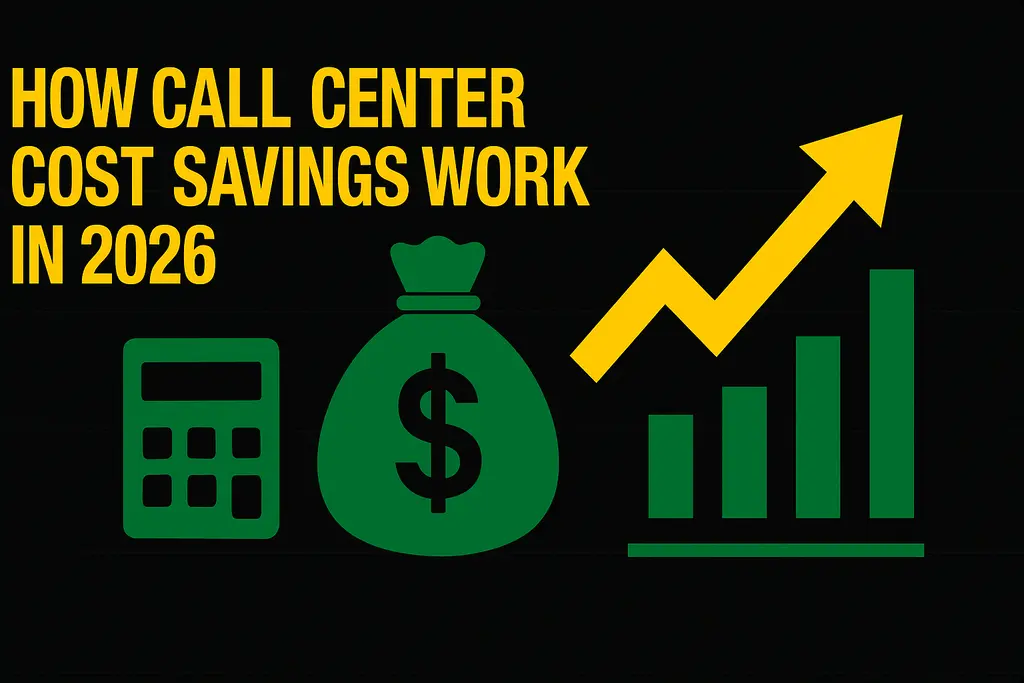All businesses want to give outstanding customer service. The main place where people get help is the call center, also known as the contact center. It is also one of the biggest costs of running a business. To get the most out of your call center without sacrificing quality, you need to know how to save money.
Strategic management is what helps call centers save money. You can’t just cut salaries or hire fewer people to get them. You can save real money by making your business run more smoothly and efficiently. This in-depth guide explains the main factors that affect costs and the best ways to control them.
Keeping an Eye on the Biggest Cost: Labor Costs
The most expensive thing in any call center is labor. To cut labor costs, you need to get the most out of your agents and keep staff turnover to a minimum.
Improving the management of the workforce
It costs money to have too many or too few employees at the wrong times. Overstaffing means that agents get paid to do nothing. High Call Abandonment Rates happen when there aren’t enough staff. This is a waste of the customer’s time. It makes the customer call back later, which raises the total cost per customer.
Advanced Workforce Management (WFM) tools are the first step to saving money. These tools look at past call volume data. They can accurately predict when agents will be needed. This makes sure that the number of staff matches the number of calls. The outcome is less time spent doing nothing and less need for costly overtime pay.
Cutting down on agent attrition
The rate of staff turnover, or attrition, in call centers is very high. It costs a lot to hire a new agent. It costs money to hire people, do background checks, and train them for weeks. A lot of the budget goes to waste when there is a lot of turnover.
Companies save money by putting money into their agents’ training. They pay and give better benefits. They use up-to-date software that makes the agent’s job easier. They make it easy to see how to move up in your career. Keeping employees for a long time saves thousands of dollars each year on training and hiring new ones.
Improving Efficiency Metrics
Every second an agent spends on the phone or doing work after a call costs more. Improving certain performance metrics is the key to saving money.
First Call Resolution (FCR)
The First Call Resolution (FCR) metric shows how many customer problems were solved on the first contact. This is one of the most important ways to save money. The customer doesn’t call back if the agent solves the problem on the first call. This eliminates the costs associated with the second, third, and fourth calls regarding the same issue.
Companies improve FCR by training their agents better. They also use full knowledge base tools. These tools let the agent quickly get to the right information.
Average Handle Time (AHT)
Average Handle Time (AHT) is the time spent talking, holding, and working following a call. Even cutting AHT by a few seconds on thousands of calls saves a lot of money. But if you try too diligently to lower AHT, the quality can suffer. This approach just makes the customer call back later.
Improving processes is the best way to lower AHT. This means clearer scripts, better integration of systems, and automating the paperwork that needs to be done after the call.
Using Technology and Automation to Your Advantage
Technology is the biggest reason why businesses can save money on things other than labor, especially when they look ahead to 2026. The entire industry is changing its cost structures due to AI and automation.
Adding options for self-service
The least expensive call is the one that never gets to a real person. Companies use self-service tools like IVR systems. They use full online Knowledge Bases and FAQ sections. Customers like using these tools to do simple things like check their account balance or the status of an order. Every call that goes to self-service saves the company a lot of money on agent time and operational expenses.
Using AI and automation wisely
AI is no longer just IVR menus. Virtual agents powered by AI can handle difficult conversational tasks. They check to see if leads are legitimate. They send calls to the agent with the right skill set. They even handle payments and forms. Gartner said that by 2026, conversational AI will save billions of dollars in contact center costs around the world.
For instance, Bigly Sales automates the whole process of qualifying leads and following up with them over the phone and in text. This means that a human sales agent only talks to leads that are well-qualified and ready to buy. The result changes the agent’s focus from low-value screening to high-value closing. Such an approach makes agents work better and cuts the cost of getting new customers by a huge amount.
Switching to cloud solutions
Previously, call centers relied on costly hardware and on-site servers. Cloud-Based Solutions are used by modern centers. This means you don’t have to spend money on hardware. It shifts costs to a predictable, scalable monthly subscription. Cloud platforms also include integrated features like advanced analytics and automatic updates. This procedure reduces the need for large internal IT teams.
The Long-Term Savings: Fixing Root Causes
The most sustainable way to save money is to find and resolve the problems that cause customers to call in the first place.
Root Cause Analysis
Data analysis reveals the primary reasons customers call. If 30% of calls are about billing errors, the cheapest fix is to solve the billing error process company-wide. This process requires collaboration between the call center and other departments like operations or IT. Eliminating the call driver eliminates the cost forever.
Improving call quality and coaching
Using speech analytics tools provides data on agent performance. It shows where agents have trouble. Coaching that is specific to an agent’s needs helps them become better at their job and raises the FCR. Quality improvements reduce mistakes. Fewer mistakes mean fewer calls back. This process leads to savings that grow over time.
Businesses can save a lot of money over a long period of time by focusing on these four areas: improving metrics, optimizing labor, using smart technology, and finding the root cause of problems.
FAQs About Call Center Cost Savings Work
Q1. What is the Cost Per Call and why does it matter?
A: The Cost Per Call (CPC) is the total cost of running the call center divided by the number of calls it gets. It matters because every cost-saving strategy ultimately aims to reduce this number. A lower CPC means that the business is working better.
Q2. Does reducing AHT always save money?
A: Cutting AHT saves money only if it doesn’t hurt First Call Resolution (FCR). If the agent rushes the call and the customer calls back, the total cost for that problem goes up. A successful strategy balances speed with quality.
Q3. How does working from home save call center money?
A: Switching to a remote workforce saves money by eliminating the expense of a physical office space. It also reduces costs related to utilities, furniture, and maintenance. Furthermore, it expands the available talent pool, which can reduce labor costs in high-cost geographical areas.
Q4. What is the typical cost of an in-house call center agent?
A: In the US, the fully loaded cost of an in-house agent—including salary, benefits, training, and overhead—can range from $25 to $40 or more per hour in 2026, depending on the role and location. This high cost makes automation and efficiency critical for savings.
Q5. What do most businesses do wrong when they try to save money on their call centers?
A: A common mistake is solely focusing on reducing Average Handle Time (AHT) without simultaneously monitoring First Call Resolution (FCR). Agents have to rush when you aggressively ask for shorter calls. They don’t always correct the customer’s main problem. Such behavior makes customers angry and causes them to call back right away. The time saved on the first, rushed call is quickly eaten up by the cost of the multiple repeat calls. Money-saving strategies always strike a balance between speed and a high-quality solution.








